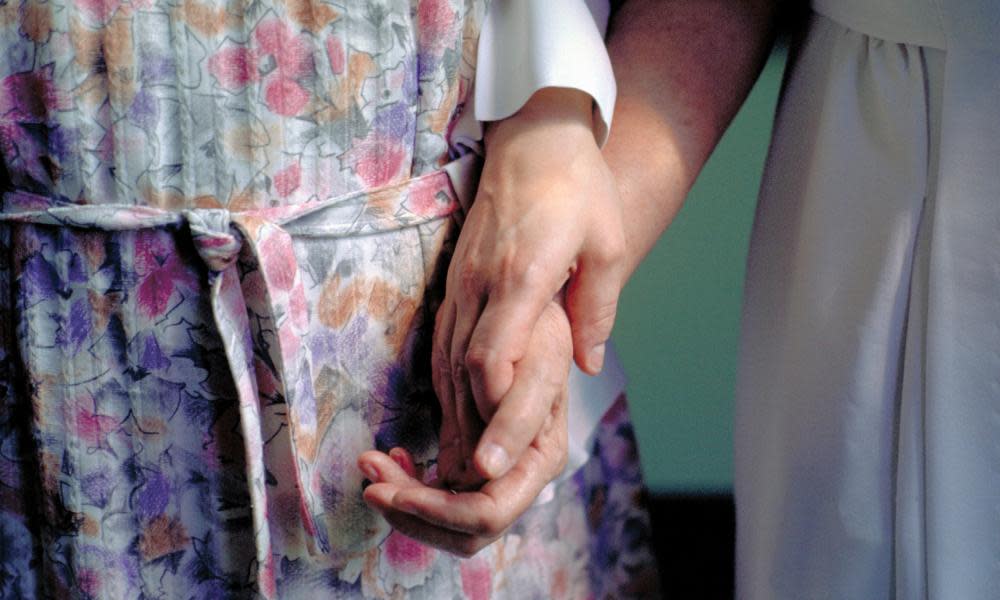Reported preventable deaths in Australian nursing homes quadrupled over a decade

The number of reported preventable deaths in nursing homes increased fourfold in a 11-year period, according to the Medical Journal of Australia.
Researchers attributed the increase to improved reporting, but believed the true number of preventable deaths still remained underestimated as they called for a national framework into aged care to tackle the issue.
Deaths by external causes – including injuries, falls and suicide – quadrupled between 2001 and 2012, from 101 to 417, while the rate also rose from 1.2 deaths per 1,000 admissions to 5.3.
Monash University’s Professor Joseph Ibrahim led the research and said the increase was due to specific changes in legislation, and would rise further with greater awareness.
“The main reason is there has been an increase in the reporting of deaths from falls after Victoria changed the approach to reporting,” he said. “Because falls make up so much of the total, when they go up, the total goes up.”
Falls accounted for 81.5% of external cause deaths over the decade, and rose from 72 recorded in 2001-2 to 409 in 2010-11.
The study only examined residents of accredited Australian nursing homes whose deaths were reported to state coroners. By law, all deaths in nursing homes resulting from non-natural causes must be reported to the coroner.
But Ibrahim said there was a reluctance to classify deaths as non-natural that led to lowered reporting.
“People get used to the idea that people get old and then die. Whenever you’re asked as a doctor you assume that it’s natural causes. People tend not to look as closely into the death.”
Of the total 21,672 nursing home deaths reported to the coroner over the decade, 15.2% were said to be due to external causes.
After falls, the second-most common cause of death was choking (7.9%) and then suicide (4.4%). Only 1.2% of cases resulted from complications of clinical care.
Ibrahim said the latter was lower than he expected. “We think that is related to people making the assumption that it is the underlying disease and not related to the care. If you are having a side effect from your medication that leads you to dying, it is unlikely that people will recognise it.”
The report’s authors said external deaths were “by definition preventable” and raised questions about the governance structures of aged care facilities. They called on the government to determine a national policy framework.
“Because health is now market-driven there isn’t one group that is advocating for residents,” Ibrahim said. “We need to have a national group that is promoting better care, the government should have the ability to withdraw funding if they’re not happy, the accreditation agency should have the ability to not accredit.”
The rate of natural deaths in nursing homes declined during the study period, from 36.2 per 1,000 admissions to 10.7, which researchers attributed to a change in reporting methodology in South Australia to focus more on external cause deaths.
The study found coroners only formally launched inquests into 3% of cases, and only made recommendations regarding injury prevention in 1.6% of all cases, though this varied by state.
95.8% of incidents leading to death occurred in the nursing home, while 53% involved residents aged 85-94 years old.
Ibrahim said the aged care sector needed stronger initiatives akin to those seen in the medical sector, rather than an undue focus on the coroner.
“The coroners are there to look at individual cases, they are not responsible for the safety and quality of care. They are not responsible for getting the sector to work better together. People assume the coroner is easy pickings to do the work but that’s not their job.
“We’ve got a system split between the private, not-for-profit and public, and there’s nothing tying them together. Because my background is in medicine, I look at what they did for patient safety and quality of care in the 1990s. We don’t have that in aged care.”

 Yahoo News
Yahoo News 
